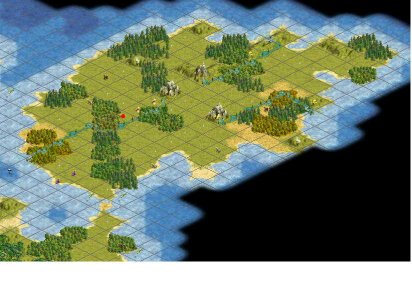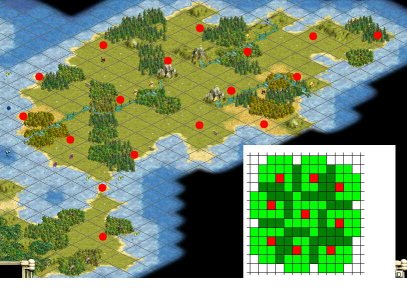Eowyn of Rohan
Warlord
- Joined
- Aug 28, 2002
- Messages
- 195
Assume you just started a Monarch game as the Japanese on a Standard Medium-Continent map with everything else standard. The island or semi-island you start on is magically revealed to you. Where would you place your cities and why?
Note: you are saving your Forbidden Palace for the Russian Conquest [the Russians are right across the inlet on the lefthand side], so you can only put your Palace on this island.
You ARE allowed to move your capital before founding it if you want, however a limit of just one space away! You don't want the AI to get ahead of you.
The red dot shows the current location of your 1st settler. You can copy the image and draw your own city plan, and then write an explanation for why you chose it.
Note: you are saving your Forbidden Palace for the Russian Conquest [the Russians are right across the inlet on the lefthand side], so you can only put your Palace on this island.
You ARE allowed to move your capital before founding it if you want, however a limit of just one space away! You don't want the AI to get ahead of you.
The red dot shows the current location of your 1st settler. You can copy the image and draw your own city plan, and then write an explanation for why you chose it.





 When an area is too corrupt [too far from FP or Palace to be productive] I try and place as FEW cities as possible there and still control the territory. Because as you pointed out the number of cities really affects corruption, and on a Standard map I ALREADY have one city too many for optimal corruption [17 shown on the map]. Not to mention the future FP. Most of my army is coming from those cities anyway, so the "extras" are merely there to qualify for domination/conquest victory.
When an area is too corrupt [too far from FP or Palace to be productive] I try and place as FEW cities as possible there and still control the territory. Because as you pointed out the number of cities really affects corruption, and on a Standard map I ALREADY have one city too many for optimal corruption [17 shown on the map]. Not to mention the future FP. Most of my army is coming from those cities anyway, so the "extras" are merely there to qualify for domination/conquest victory.